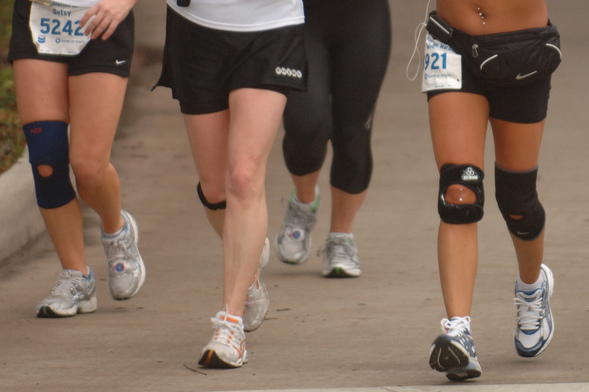

5 Tips To Start Running After Knee Injury
January 15, 2016
There’s no easy way to get back into running after an injury. It’s an uphill climb, but certainly, one worth embarking on because of the great benefits.
To name just a few, it strengthens leg muscles, it helps you lose weight (which decreases stress on your joints), it relieves stress and makes you feel like you’ve accomplished something substantial in your day.
So whether you are looking to resume training for a marathon or simply get some exercise, we have a few suggestions for those who are recovering from injuries that will help you get back into the swing of things after a long hiatus.
Next time you lace up your shoes, consider these points (assuming your doctor has given you the okay). Here are your 5 Tips To Start Running After Knee Injury.
Leave Your Ego At The Door
The first, and hardest, thing to do is to let go of your ego. For athletes, injuries commonly occur during peak performances when they’re feeling physically fit and strong. In a matter of seconds, all of that changes to a painful realization of your body’s limitations. This never comes without feelings of disappointment, frustration and doubt. However, the future is bright. You must be willing to start over with a clean slate and take baby steps!
Be Patient
Patience and persistence are the keys to success. Everything is going to feel slow and sluggish for a while. That can be hard to accept, but you must work with it until you regain your strength. Let nature run it’s course. It could be a while before you’re able to run that 10k or half-marathon.
Start A New Regiment
You won’t be able to pick up where you left off, and that might mean excluding running for a while. If you haven’t already done so, consider yoga or spinning in preparation for running. Cycling is a terrific exercise to help you get back to your normal workout, because it helps rejuvenate the muscles and tendons without causing too much stress to the joints.
If those options aren’t available to you, consider a workout that involves walking until you feel you have the strength to begin jogging. As you ease into jogging, take a break to walk after 30 seconds. Then progress to 1:00 and so on. This is called interval training.
Run Slower
It’s not about distances when recovering from an injury. Remember, don’t let your ego dictate your regimen. Running slowly will allow your body to warm up to the idea of running and give your injured leg(s) time to adjust. Attempting to do too much, too fast can alter your running form and you may not even be aware of it! The last thing you want to do is re-injure yourself or develop a habit of limping or favoring one leg over the other.
Set A Goal
To help get the encouragement you need, consider signing up for a 5k 4-6 weeks in advance. This should be enough time to prepare. Then sign up for another run, perhaps a 10k in 8-10 weeks. This will help you stay focused on short-term goals while keeping the prospect of greater goals like a marathon in mind. Having goals set in place will prove to be very motivating, which will help get you through the discomfort of rehab and training.
Your Journey to Pain Relief
App tracks progress. Step by step guide to pain relief and prevention.
Show resultsFree Newsletter
Stay in the know. Our blogs are written by orthopaedic surgeons.
